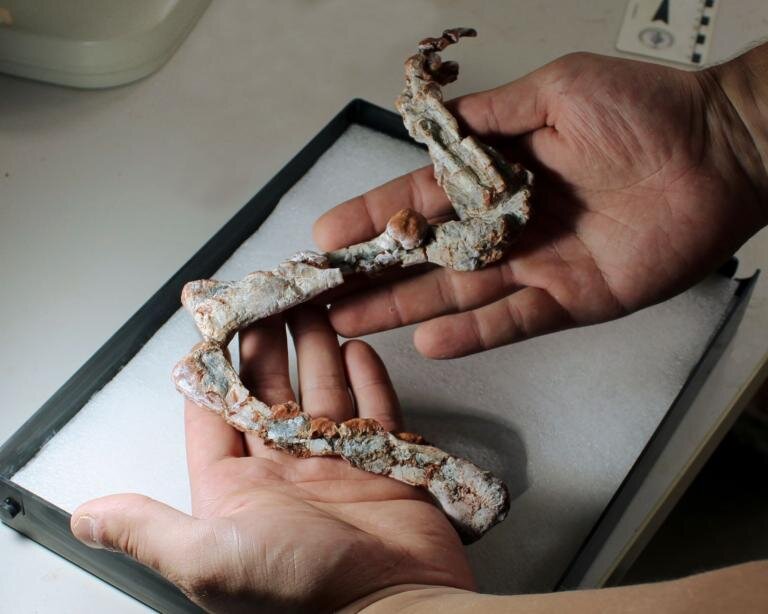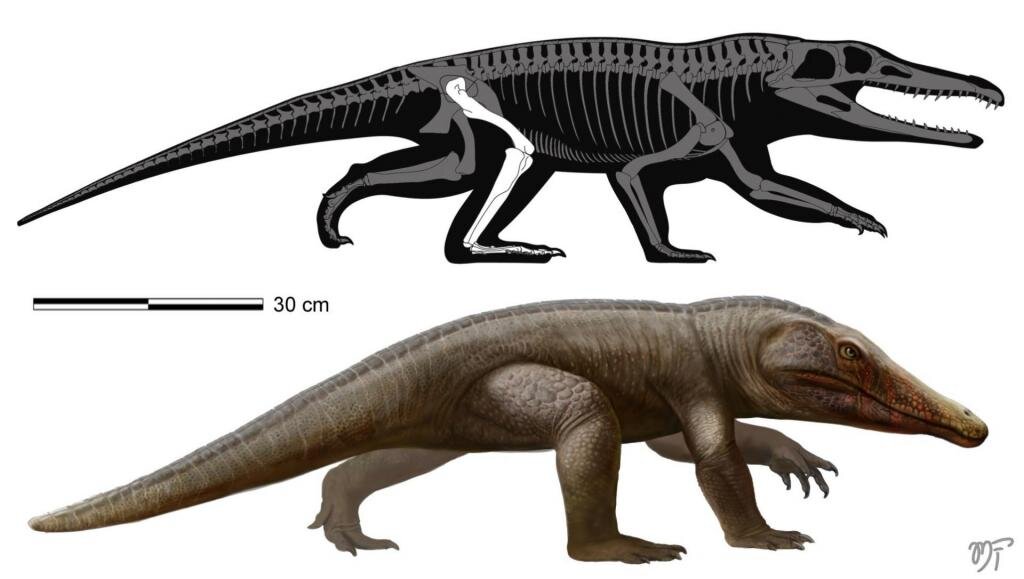A new genus and species of temnospondyl amphibian has been described by a team of paleontologists from the Universidade Federal do Pampa, the Universidade Federal do Vale do São Francisco, Princeton University and Harvard University.

An artist’s impression of Kwatisuchus rosai. Image credit: Márcio Castro.
The newly-identified temnospondyl species roamed our planet during the Early Triassic epoch, some 249 million years ago.
/i.s3.glbimg.com/v1/AUTH_59edd422c0c84a879bd37670ae4f538a/internal_photos/bs/2022/9/l/E2MYZSSkAU8TpUBadxuw/dinossauros-2.jpeg)
Named Kwatisuchus rosai, the ancient animal was approximately 1.5 m (4.9 feet) in length.
It belonged to Benthosuchidae, a small group of giant crocodile-like amphibians that lived during the Triassic.
These creatures were primarily aquatic, living in rivers and lakes. They were up to 2.5 m (8.2 feet) in length and have no direct living relatives.
/i.s3.glbimg.com/v1/AUTH_59edd422c0c84a879bd37670ae4f538a/internal_photos/bs/2022/2/p/sR3OFrQrS3YKyCcxx0ZA/dinossauros-1.jpeg)
“Kwatisuchus rosai can be confidently assigned to the Benthosuchidae, a stereospondyl clade with a distribution previously restricted to the East European Platform,” said Universidade Federal do Pampa paleontologist Felipe Pinheiro and his colelagues.
“Phylogenetic analysis confirms the relationship of the new genus to the trematosaurian lineage, being closely related to the genus Benthosuchus.”

The skull of Kwatisuchus rosai. Image credit: Felipe Pinheiro.
The fossilized skull of Kwatisuchus rosai was found in August 2022 in the Sanga do Cabral Formation, a sedimentary rock formation found in Rio Grande do Sul, Brazil.
“Kwatisuchus rosai was a survivor,” said Dr. Pinheiro, led author of a paper published in The Anatomical Record.

“It lived in an environment devastated by the greatest mass extinction in the history of the planet.”
“Since they were animals adapted to conditions of high environmental stress, temnospondyl amphibians became abundant throughout the world.”
“They help us understand how extinctions affected the planet and how we can understand their effects today.”

“This was the most diverse group of primitive tetrapods, recorded on every continent on Earth,” said Dr. Estevan Eltink, a paleontologist at the Universidade Federal do Vale do São Francisco.
“Temnospondyls survived the greatest mass extinction of all time.”
“They have a broad record across geological periods, and had several pulses of irradiation over the millions of years of their existence.”
